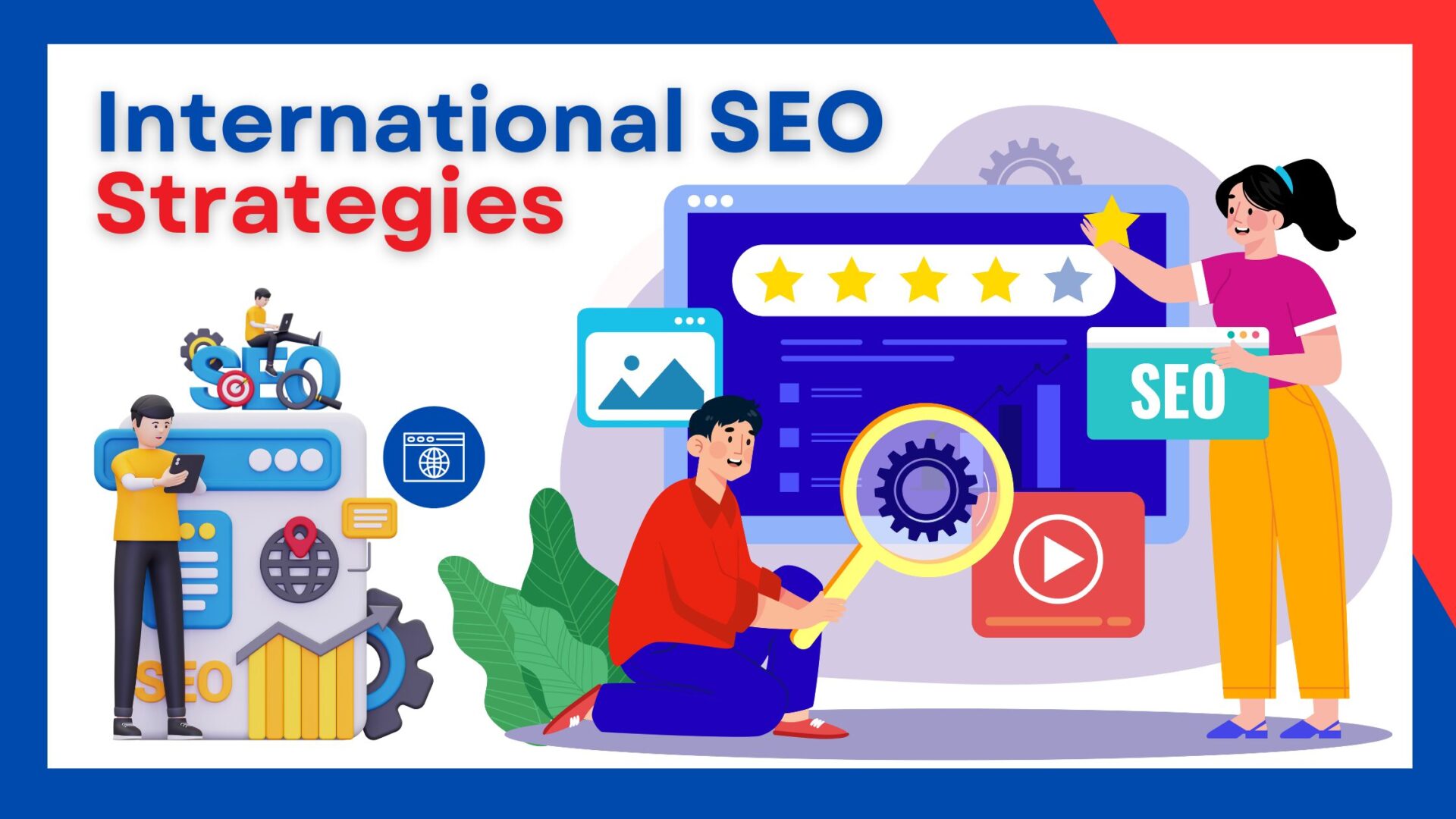
Expanding your business globally is an exciting step, but it comes with challenges, especially regarding SEO. Implementing the right international SEO strategies ensures that your website reaches the right audience in multiple regions. This guide will walk you through developing a successful global SEO plan.
Whether you’re an international SEO expert or just starting, these tips will help you create a solid strategy. We’ll also touch on internal linking, tools for international SEO, and key practices for global optimization.
Quick View
What is International SEO?
International SEO is the process of optimizing your website to attract traffic from different countries and regions. It makes sure that search engines understand which countries you want to target and what languages you are using.
By using international SEO strategies, you can increase your website’s visibility and traffic across different markets, ensuring that users in specific regions find your content relevant and useful.
Why You Need an International SEO Strategy
If you’re expanding your business internationally, you need a dedicated SEO strategy for each market. Here’s why:
- Localized Content: Users from different countries prefer content in their language, tailored to their needs.
- Targeted Traffic: International SEO helps attract the right traffic from the regions you serve.
- Global Competitiveness: Competing globally means optimizing your site for different countries’ search engines and user behaviors.
How to Alinge your International SEO Strategy
Develop a Clear URL Structure
Your website’s URL structure plays a crucial role in how search engines interpret your site. A well-structured URL helps search engines understand which region or language you are targeting. Options for International URL Structures:
- ccTLD (Country Code Top-Level Domains): Example:
example.co.uk,example.fr- Best for clear geo-targeting, but managing multiple domains can be difficult.
- Subdomains: Example:
uk.example.com,fr.example.com- Easier to manage, but not as strong for geo-targeting.
- Subdirectories: Example:
example.com/uk,example.com/fr- Cost-effective and easy to maintain under a single domain.
Tip: Choose the structure that best suits your global strategy and resources.
Use Hreflang Tags Correctly
Hreflang tags are essential for telling search engines which language and region a page is targeting. They help prevent duplicate content issues when your site has similar content in multiple languages.
Example:
If you have an English version of your site targeting users in the UK and the US, the hreflang tags would look like this:
<link rel="alternate" href="http://example.com/uk" hreflang="en-gb" />
<link rel="alternate" href="http://example.com/us" hreflang="en-us" />
Tip: Make sure you implement hreflang tags correctly, or you could confuse search engines.
Localize Your Content
Content localization is key to a successful international SEO strategy. It’s not enough to simply translate your content; you must adapt it to the local culture, preferences, and search behaviors.
Key Factors to Localize:
- Keywords: Research region-specific keywords.
- Language: Use local dialects and idiomatic expressions.
- Currency and Units: Display prices in local currencies and use region-specific units of measure.
Tip: Hire local content creators or translators who understand the culture and language nuances of your target markets.
Optimize for Local Search Engines
While Google is dominant in many countries, other search engines like Baidu (China), Yandex (Russia), and Naver (South Korea) are prevalent in specific regions. Each search engine has unique algorithms and ranking factors.
Strategy:
- Baidu: Focus on simplified Chinese content, fast-loading sites, and backlinks from Chinese websites.
- Yandex: Prioritize page relevance, local links, and mobile optimization.
- Naver: Content quality and paid ads are important for ranking.
Tip: Tailor your SEO efforts to the dominant search engines in each region.
Conduct Regional Keyword Research
Effective international SEO requires extensive keyword research for each region you target. A keyword that works well in one country may not be effective in another.
How to Find Regional Keywords:
- Use tools like SEMrush, Ahrefs, and Google Keyword Planner for local keyword insights.
- Study the search behavior of your target audience in each region.
- Focus on local slang or terms that may differ from country to country.
Tip: Always create content that matches regional search intent to improve rankings.
Internal Linking Strategy in SEO
Internal linking is essential for both regular and international SEO. It helps distribute authority across your site and makes it easier for search engines to crawl.
Best Practices for Internal Linking:
- Link-related content across regions and languages.
- Use descriptive anchor texts that include keywords relevant to the target country.
- Ensure all internal links point to the correct regional pages.
Tip: A well-implemented internal linking strategy in SEO can significantly improve user experience and search engine crawling.
Page Speed Optimization for Global Markets
Page speed is a ranking factor for all search engines. It’s particularly important when targeting international audiences, as slow loading times can hurt user experience.
Tips for Improving Page Speed:
- Use a Content Delivery Network (CDN) to distribute your content across different regions.
- Compress images and reduce file sizes.
- Minimize the use of plugins and scripts that slow down the page.
Tip: Test your page speed in each target region using tools like Google PageSpeed Insights.
Tools for International SEO
Several tools can simplify and enhance your international SEO efforts.
Recommended Tools for International SEO:
- Google Search Console: Monitor your site’s performance across different countries and languages.
- Ahrefs: Provides insights into local keywords and backlinks.
- SEMrush: Offers regional keyword research and competitor analysis.
- Screaming Frog: Helps you audit Hreflang tags and website structure.
- GeoIP Detection Tools: Ensure the correct page is served to the correct audience based on their location.
Tip: Use a combination of these tools to cover all aspects of your international SEO strategy.
Tracking and Measuring International SEO Performance
Once your international SEO strategy is implemented, you need to track and measure its success.
Key Metrics to Monitor:
- Organic Traffic by Region: Check if each targeted region sees an increase in traffic.
- Conversion Rates: Track how well your international traffic converts into customers.
- Keyword Rankings: Monitor how your site ranks for region-specific keywords.
- Bounce Rate: A high bounce rate may indicate that your content isn’t relevant to the target audience.
Tip: Use tools like Google Analytics and SEMrush to track your international SEO performance.
Hire an International SEO Consultant
If managing your international SEO efforts seems overwhelming, consider hiring an international SEO expert or consultant. They can guide you through the complexities of geo-targeting, hreflang implementation, and content localization.
What to Look for in an International SEO Consultant:
- Experience with multi-country websites.
- Knowledge of different regional search engines and algorithms.
- Expertise in keyword research and content localization.
Developing a successful international SEO strategy requires careful planning and execution. From choosing the right URL structure to optimizing for local search engines, every aspect of your site needs to be tailored to meet the needs of each target market.
Whether you’re an international SEO expert or just starting, following these strategies will help your site rank higher and attract the right audience across different regions.
With the right tools, techniques, and expert guidance, you can build a strong global presence and drive in the international market. Keep monitoring your results, adjusting your strategy, and localizing your content for continued growth.




